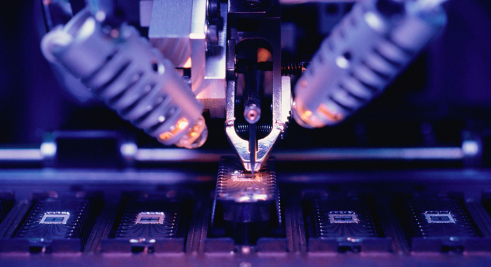High-frequency switching power supplies and AC switching power supplies are two different types of power supplies. They have certain differences in working principles, application fields, advantages and disadvantages. The following will introduce the differences between the two power supplies in detail.

Working principle of high frequency switching power supply
First of all, the working principle of high-frequency switching power supplies is to use high-frequency switching tubes to perform switching actions to realize the operation of the power supply, while AC switching power supplies use AC power to perform DC conversion.
High-frequency switching power supplies generally use solid-state switching elements (such as MOSFET, IGBT, etc.) for switching actions, which can realize high-frequency switching operations and output stable DC voltage.
The AC switching power supply uses AC voltage input and obtains the required DC voltage output through processes such as rectification, filtering, and adjustment.
Application of high frequency switching power supply
Secondly, high-frequency switching power supplies are mainly used in electronic products, such as computers, mobile phones, televisions and other household appliances and communication equipment, and their main function is to provide stable DC power supply.
AC switching power supplies are widely used in industrial fields, such as inverters, industrial computers, UPS power supplies, and power adapters for household appliances. AC switching power supplies are mainly used to convert AC power to DC, which can be applied to various load requirements.
The difference in efficiency
In addition, there are also differences in efficiency between high-frequency switching power supplies and AC switching power supplies. High-frequency switching power supplies have a higher operating frequency and are more efficient than AC switching power supplies. Because high-frequency switching power supplies have a fast switching operation speed, they can achieve faster power conversion, thereby reducing energy loss.
The operating frequency of AC switching power supplies is low, so the energy loss generated is relatively high.
The difference between volume and weight
In addition, high-frequency switching power supplies and AC switching power supplies are also different in size and weight. High-frequency switching power supplies usually adopt a miniaturized design, with a small size and light weight, which is convenient to carry and install. However, AC switching power supplies are larger in size and heavier in weight due to the need for more component connections and line design.
This makes AC switching power supplies less suitable for applications with limited space and high weight requirements in some occasions.
Reliability and cost differences
Finally, high-frequency switching power supplies and AC switching power supplies are also different in reliability and cost. High-frequency switching power supplies have higher reliability and are easy to realize automatic control and protection functions due to the use of advanced solid-state switching components and control technology.
AC switching power supplies are relatively simple, easy to implement and maintain, but relatively low in reliability. In addition, high-frequency switching power supplies have high manufacturing and process requirements, so the cost is usually high, while AC switching power supplies are relatively low.
In summary, there are certain differences between high-frequency switching power supplies and AC switching power supplies in terms of working principles, application fields, efficiency, volume and weight, reliability, and cost. Understanding these differences can help us choose the appropriate power supply type and apply it reasonably in different scenarios to meet the power supply needs.







